Is Cork's €670k Urban Sculpture Trail a load of 'ArtBollocks'?
3 out of the 5 Island City public art pieces have been installed in the city centre as part of the Fáilte Ireland-funded initiative, supported by Cork City Council. Pádraig O’Connor takes a look.
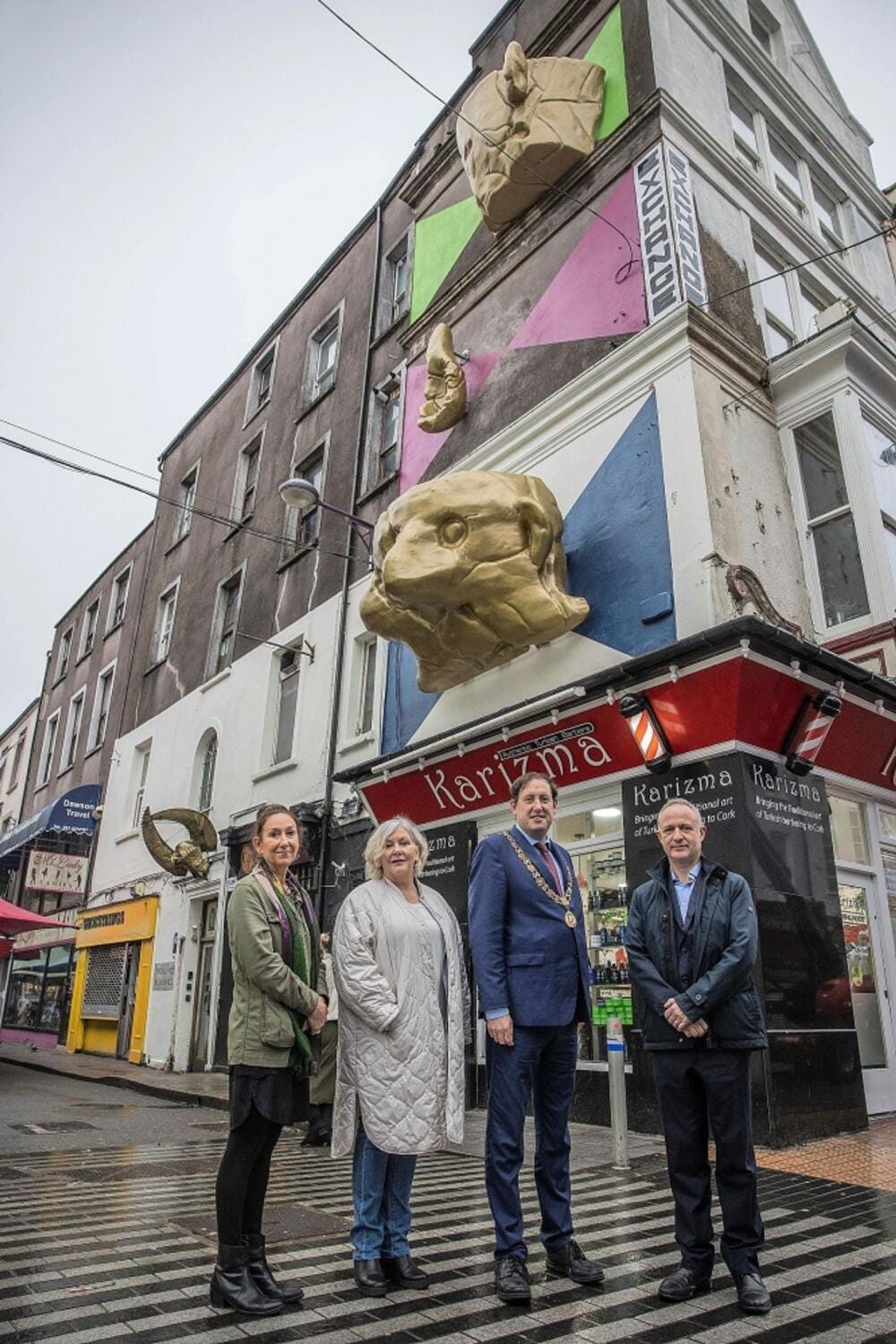
When Marcel Duchamp submitted his readymade sculpture, a porcelain urinal entitled ‘Fountain’ to The Society of Independent Artists in New York in 1917, it marked what is widely considered the first case of appropriation in the history of art and with it, a cataclysmic shift in the notion of what art should be. The urinal or “fountain” was not a piece of work to be looked at, Duchamp after all had no hand in its creation, it was, more than anything, art to talk and write about. There was no reward to be had in giving it your visual attention. It existed in order to manufacture words and though probably intended as a joke, it has come to establish much of what is now referred to as postmodern i.e. art that generates text.
And so it is that you are now reading an article about Cork’s Urban Sculpture Trail, “the biggest ever single investment in public art in Cork City” with €670,000 of funding provided by Fáilte Ireland under the Urban Animation Scheme, and to date, three out of the five works chosen have been installed in locations across the city: on Carey’s Lane, Cook Street and The Exchange Building on Princes Street.

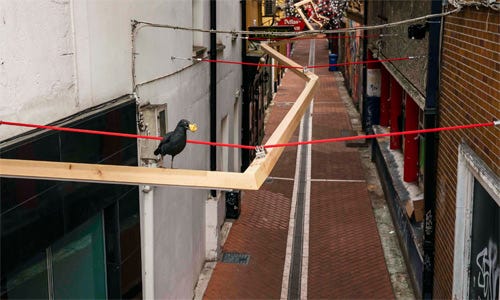
First up is ‘Sentinels’ created by Niamh McCann and described on the Cork City Council website as “a lane length sculptural piece...of a seagull, perched atop a neon strip, sentinel-like on either end of Carey’s Lane”. This sculpture, we are told, is a nod to “the city’s merchant and yachting tradition”, its “urban adaptability” and “migratory history”. It is influenced by the “presence of the Huguenot graveyard” and “made of sustainable materials”, with the red rope attaching the structure to the walls, a reference to the “Rebel county’s traditional color”.
Notice how so much language has been attached to this first piece, how broad and universal the terms being used are. Could it be, like Duchamp’s ‘Fountain’, that the words attached to the sculpture are actually more important than looking at the work itself? Because to the uninitiated layman, looking at this piece, it is for all the world, two birds and one long stick.
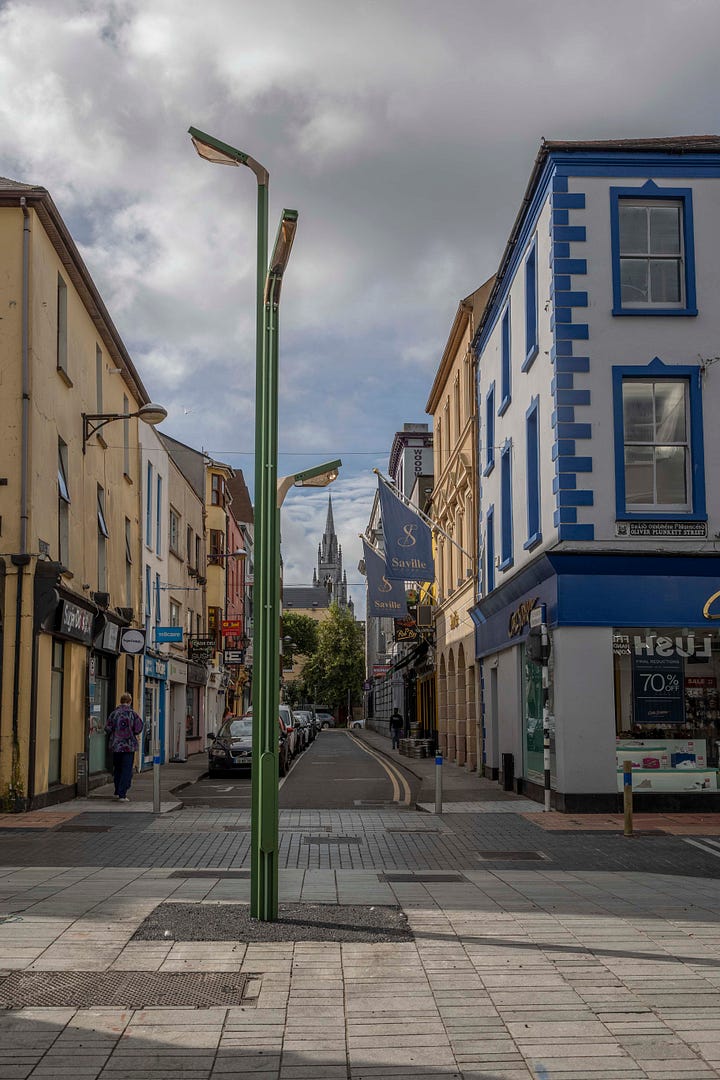
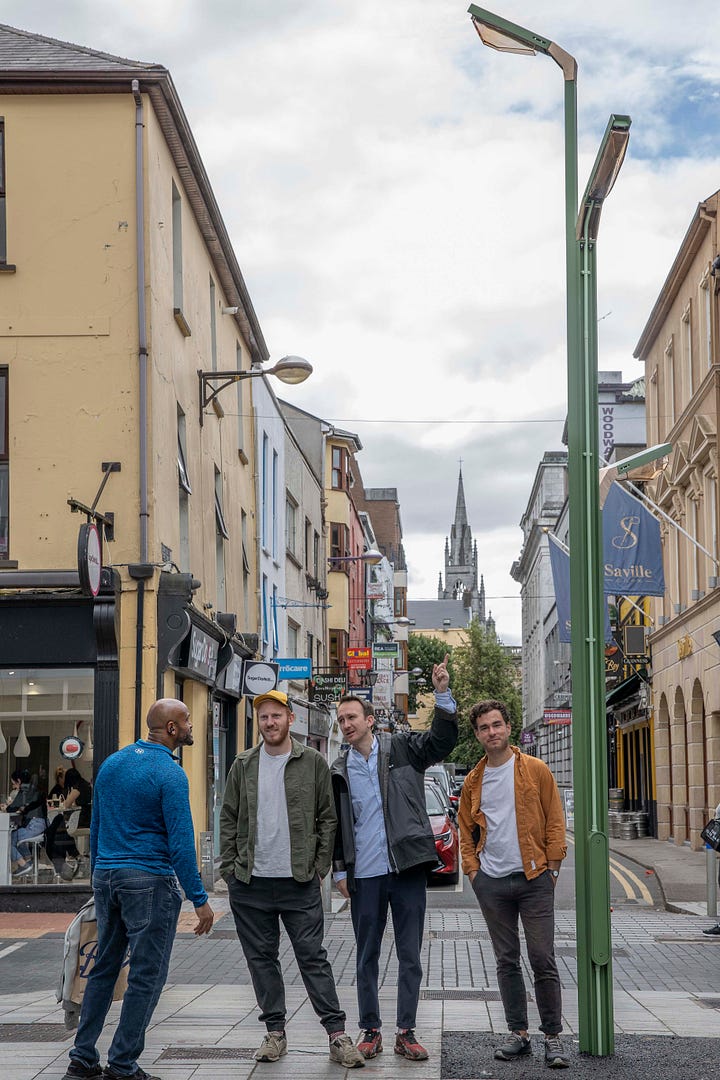

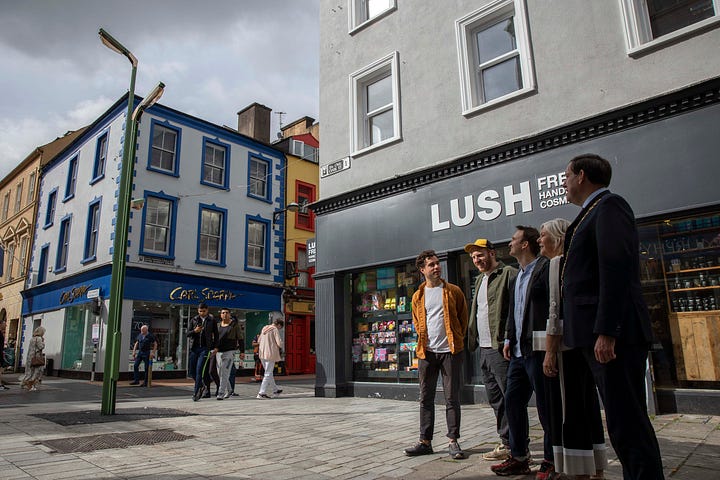
Moving on to Princes Street and ‘The Face Cup’, “a celebration of the city’s rich prehistoric history”, which was created by Fiona Mulholland and is a grouping of three sculptural reliefs based on “a collection of Bronze Age Ceramic artefacts-a small clay cup decorated with eyes, nose, ears and feet, another pottery vessel with eyes, and a spoon dating approximately 3800 years old”. Not that you would be able to tell any of this by looking at these sculptures from the street, as the three pieces are visually unappealing, unintelligible and unworthy of more than a glance.
But that is just one opinion and perhaps overly harsh. Maybe it is borne out of frustration at not being able to understand the work on first viewing; an old familiar feeling of not trusting one’s own eyes when confronted with a piece of postmodern art and instead, having the irresistible urge to consult some text to help in this process.
An account of Mulholland’s practice might be of assistance. It is described as reducing “elements to their component parts to present poetic configurations made from common mass-produced materials, creating a sculptural ‘bricolage’ aesthetic, that cross-references conflicting narratives of ‘nature’ and ‘culture’”. Unfortunately, this is of no help whatsoever, as how could anyone who isn’t a “professional” artist understand any of this gibberish? Did Rodin or Giacometti, or any great craftsperson really feel the need to talk about their work in this way, or would it be a grave embarrassment to do so?
Finally to Cook Street and ‘Boom Nouveau’, a sculpture that “mimics the tangible form of an everyday street feature-the lamppost”. There’s no need to complicate matters here, this last piece is a lamppost placed in the middle of the footpath. That’s it.
There’s nothing more to it. The buskers leaning up against it don’t even notice it. Needless to say there is a lot of talk about “rupture” and “mystery” but at this stage you get the point. The waffle is more important than the work and these are three extremely uninspiring works, with no beauty, no use, and crucially have absolutely nothing to do with the lived experience of any of the artists involved.
The creators of ‘Boom Nouveau’ even have the audacity to claim because their work has a use, i.e. that it lights the street and therefore it will make it easier for people to talk about as a piece of art. This is utter nonsense. It has no use! It is a lamppost on the main street in Cork, which is already perfectly well lit in the evening time. This is like giving a child with a box of blue crayons, another blue crayon and saying, now you can paint the sky. It’s a ludicrous claim, but such is the world we live in.
What we have here then, in Island City- Cork’s Urban Sculpture Trail, is art as theoretical discourse and the presentation of official culture, packaged in what Brian Ashbee memorably called “ArtBollocks”; meaningless words accompanying postmodern art in order to hide the lack of meaning in the works themselves.
There are many videos online promoting these pieces claiming they are very “exciting” and a great addition to the cultural fabric of the city, but really, if you’re excited by a couple of birds or a lamppost, then the city was already thrilling enough.
Pádraig O’ Connor is a writer based in Cork City. You can read more of his reviews on T+D.
Island City- Cork’s Urban Sculpture Trail will be completed by the end of the year. It “will animate the city and illuminate our unique heritage in an arresting, intriguing and playful way.” More information here.




The comparison between local (contemporary) artists with Duchamp, Rodin and Giacometti - all dead white men from the art historic canon - amused me. While a comparison with other European cities who are investing into art trails around their cities would be much more beneficial. Cork does not have a tradition of contemporary sculpture within the city center although there are experiments in Tramore Park that resulted in a recent exhibition at MTU. In my opinion sculptural interventions or installations in our contemporary spaces have the task to surprise, make us look at or frown at something new and unseen. While a lamp post might be somehow unattractive (or rather unspectacular) for people walking on Oliver Plunkett Str, it uses the knowledge of Cork‘s citizens - have they seen a similar lamp post here before? Where did it come from? Public sculpture should not be as in-your-face as the author might like it, but play with the familiarity of its citizens with their streets and potentially use the factor of surprise... but maybe the almost too easy comparison with the art by old white dead men is simpler to understand as to approach it with childish curiosity and the opportunity to learn about contemporary ideas.
Rodin's early work was not critically acclaimed although his later work is, of course, much celebrated. In terms of verbose descriptions, Rodin described his work Gates of Hell "[The artist] must celebrate that poignant struggle which is the basis of our existence, and which brings to grips the body and the soul. Nothing is more moving than the maddened beast, perishing in lust and begging vainly for mercy from an insatiable passion." Whereas he described his most famous work, The Kiss, as "a large sculpted knick-knack following the usual formula" - beauty is in the eye of the beholder and art can be decorative but can also make us think - which objective these pieces in Cork have successfully achieved! Keep up the great work!